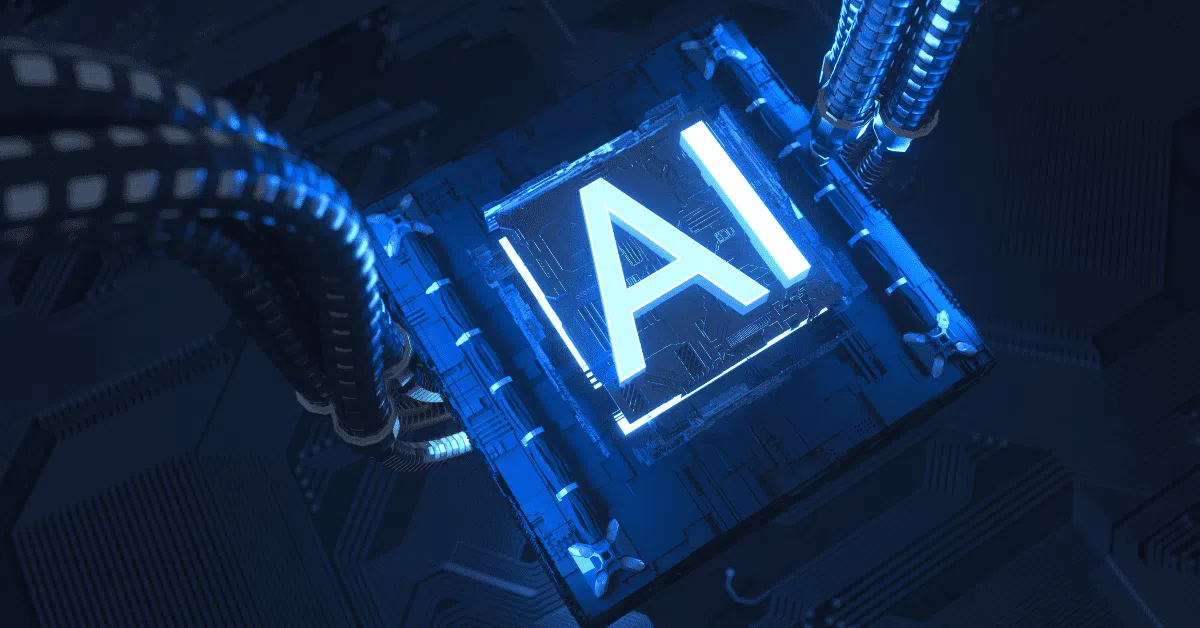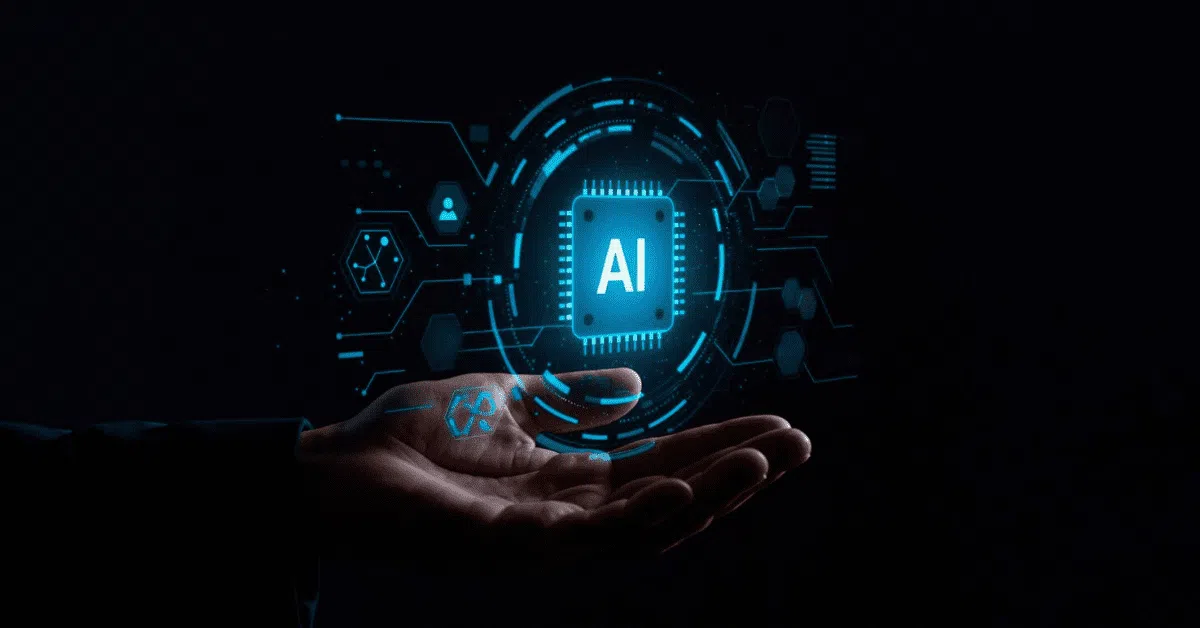Key Trends in AI Software Development to Watch
Industry Trends & Innovation
Read Time: 15 mins

Artificial Intelligence (AI) has evolved from a theoretical concept to one of the most transformative technologies shaping modern industries. With the potential to add over $4.4 trillion to the global economy annually, the transformative potential of AI is undeniable.
However, harnessing this power requires not just advanced technologies, but expert software developers, proven development processes, and scalable talent solutions. AI is set to change the way business work all over the world. This also means changing the way that business acquire talent and what they look for in candidates.
At ParallelStaff, we help organizations accelerate innovation by providing expert IT specialists and developers to support AI-assisted development and real-world software development across various industries.
 Generative AI tools, powered by large language models and machine learning techniques, are revolutionizing application development. From natural language processing capabilities that help parse documentation to AI assistants that support code generation in various programming languages, these tools are driving smarter workflows for software developers and software engineers alike.
Whether it’s assisting with natural language inputs or using deep learning models to detect anomalies, generative AI model integrations are making AI-powered development tools essential to modern software engineering.
One standout use case includes AI-powered platforms that can automatically generate test cases, helping ensure better code quality and reducing time spent on repetitive manual validation.
GitHub Copilot alone has millions of users and is now used in over 50,000 organizations. It’s estimated that nearly 50% of code written with Copilot is AI-generated, a figure expected to climb to 80% by 2027.
Generative AI tools, powered by large language models and machine learning techniques, are revolutionizing application development. From natural language processing capabilities that help parse documentation to AI assistants that support code generation in various programming languages, these tools are driving smarter workflows for software developers and software engineers alike.
Whether it’s assisting with natural language inputs or using deep learning models to detect anomalies, generative AI model integrations are making AI-powered development tools essential to modern software engineering.
One standout use case includes AI-powered platforms that can automatically generate test cases, helping ensure better code quality and reducing time spent on repetitive manual validation.
GitHub Copilot alone has millions of users and is now used in over 50,000 organizations. It’s estimated that nearly 50% of code written with Copilot is AI-generated, a figure expected to climb to 80% by 2027.
 As artificial intelligence becomes more deeply integrated into software engineering, we are witnessing a transformation in how developers approach design, implementation, and deployment. From natural-language coding to agentic AI systems, emerging paradigms are redefining what modern development looks like. This article explores five of the most impactful trends shaping AI-assisted development today.
As artificial intelligence becomes more deeply integrated into software engineering, we are witnessing a transformation in how developers approach design, implementation, and deployment. From natural-language coding to agentic AI systems, emerging paradigms are redefining what modern development looks like. This article explores five of the most impactful trends shaping AI-assisted development today.
 As AI becomes embedded in every layer of the software development process, organizations must also evolve their workforce to remain competitive. Traditional development roles are shifting, requiring developers, engineers, and even project managers to understand how to collaborate with AI tools, prompt large language models effectively, and integrate machine learning components into production-ready systems.
Reskilling initiatives are now essential to upskilling existing teams in areas such as prompt engineering, model interpretability, and ethical AI deployment.
This shift is not only technical; it also demands stronger cross-functional collaboration between development, data science, operations, and business teams. AI is no longer siloed, it’s central to product strategy, user experience, and competitive differentiation.
Organizations investing in structured training programs, AI literacy workshops, and hands-on experimentation are better positioned to capture the productivity gains AI promises. In-house AI labs, hackathons, and sandbox environments are emerging as effective strategies to build internal capabilities while fostering innovation.
At ParallelStaff, we recognize the growing need for adaptable, AI-fluent talent. Our developers and IT specialists come equipped not just with traditional programming skills, but with a working knowledge of generative AI platforms, agile workflows infused with AI, and the best practices required to scale AI in real-world applications.
Whether you’re retraining your internal team or augmenting with external experts, investing in AI talent is no longer optional, it’s a strategic imperative.
As AI becomes embedded in every layer of the software development process, organizations must also evolve their workforce to remain competitive. Traditional development roles are shifting, requiring developers, engineers, and even project managers to understand how to collaborate with AI tools, prompt large language models effectively, and integrate machine learning components into production-ready systems.
Reskilling initiatives are now essential to upskilling existing teams in areas such as prompt engineering, model interpretability, and ethical AI deployment.
This shift is not only technical; it also demands stronger cross-functional collaboration between development, data science, operations, and business teams. AI is no longer siloed, it’s central to product strategy, user experience, and competitive differentiation.
Organizations investing in structured training programs, AI literacy workshops, and hands-on experimentation are better positioned to capture the productivity gains AI promises. In-house AI labs, hackathons, and sandbox environments are emerging as effective strategies to build internal capabilities while fostering innovation.
At ParallelStaff, we recognize the growing need for adaptable, AI-fluent talent. Our developers and IT specialists come equipped not just with traditional programming skills, but with a working knowledge of generative AI platforms, agile workflows infused with AI, and the best practices required to scale AI in real-world applications.
Whether you’re retraining your internal team or augmenting with external experts, investing in AI talent is no longer optional, it’s a strategic imperative.
AI Is Changing the Development Process
AI is no longer a futuristic idea, it’s an integral part of the software development process. With the rise of AI tools like GitHub Copilot, developers can now generate code, perform code reviews, and even automate testing code with unprecedented efficiency. These AI-powered tools reduce human error, accelerate project timelines, and elevate code quality across teams. AI tool adoption is especially evident in software engineering, where tools now assist with bug fixes, generating code snippets, and managing complex tasks that once required hours of manual programming. Platforms using generative AI technologies are reshaping how software engineers work, augmenting their problem-solving skills and enhancing overall productivity.AI Tools Drive Smarter Development Workflows
 Generative AI tools, powered by large language models and machine learning techniques, are revolutionizing application development. From natural language processing capabilities that help parse documentation to AI assistants that support code generation in various programming languages, these tools are driving smarter workflows for software developers and software engineers alike.
Whether it’s assisting with natural language inputs or using deep learning models to detect anomalies, generative AI model integrations are making AI-powered development tools essential to modern software engineering.
One standout use case includes AI-powered platforms that can automatically generate test cases, helping ensure better code quality and reducing time spent on repetitive manual validation.
GitHub Copilot alone has millions of users and is now used in over 50,000 organizations. It’s estimated that nearly 50% of code written with Copilot is AI-generated, a figure expected to climb to 80% by 2027.
Generative AI tools, powered by large language models and machine learning techniques, are revolutionizing application development. From natural language processing capabilities that help parse documentation to AI assistants that support code generation in various programming languages, these tools are driving smarter workflows for software developers and software engineers alike.
Whether it’s assisting with natural language inputs or using deep learning models to detect anomalies, generative AI model integrations are making AI-powered development tools essential to modern software engineering.
One standout use case includes AI-powered platforms that can automatically generate test cases, helping ensure better code quality and reducing time spent on repetitive manual validation.
GitHub Copilot alone has millions of users and is now used in over 50,000 organizations. It’s estimated that nearly 50% of code written with Copilot is AI-generated, a figure expected to climb to 80% by 2027.
AI in the Enterprise: A Strategic Priority
For many organizations, the use of AI has become a strategic priority. Whether it's through AI-assisted fraud detection in finance, natural language summarization in investment research, or machine learning-driven risk management, AI models are enabling faster, data-driven decisions and enhancing the business model. At the same time, AI agents are being used in customer service, AI-generated content creation, and healthcare diagnostics. These AI agents leverage advanced data science, neural networks, and exploratory data analysis to deliver real-time insights and reduce reliance on human developers for repetitive or complex design patterns. However, AI integration requires more than tools. It demands experienced team members who understand data governance, software development best practices, and how to apply AI tools effectively within open-source and proprietary code environments.Emerging AI Development Trends
 As artificial intelligence becomes more deeply integrated into software engineering, we are witnessing a transformation in how developers approach design, implementation, and deployment. From natural-language coding to agentic AI systems, emerging paradigms are redefining what modern development looks like. This article explores five of the most impactful trends shaping AI-assisted development today.
As artificial intelligence becomes more deeply integrated into software engineering, we are witnessing a transformation in how developers approach design, implementation, and deployment. From natural-language coding to agentic AI systems, emerging paradigms are redefining what modern development looks like. This article explores five of the most impactful trends shaping AI-assisted development today.
1. Vibe Coding: Natural Language as the New Interface
One of the most striking shifts is the rise of “vibe coding,” where developers describe tasks in natural language and rely on AI models to generate functional code. This method is particularly effective for prototyping and exploratory development, enabling rapid ideation without deep syntax knowledge. By lowering the technical barrier, vibe coding allows domain experts and non-traditional developers to contribute directly to software creation. While human oversight remains essential to validate and refine output, the acceleration of early-phase development is significant, especially in fast-paced innovation environments.2. Agentic AI: Autonomous Development Agents
AI platforms are evolving from passive code assistants to autonomous agents capable of planning, testing, refactoring, and deploying software with minimal human intervention. This emerging class of systems, dubbed Agentic AI, acts as a virtual engineer, particularly effective in continuous integration/continuous delivery (CI/CD) pipelines and large-scale codebase transformations. Recognized by Gartner as a top technology trend for 2025, agentic AI represents a paradigm shift where AI doesn’t just assist but actively drives progress, opening new possibilities for automation at scale.3. AI-Native Platforms and Software Engineering 3.0
Next-generation development environments are being built with AI at their core. These “AI-native” platforms embed machine learning capabilities directly into the integrated development environment (IDE), offering features such as real-time error detection, auto-pruning of redundant code, and context-aware recommendations. This movement is aligned with the concept of Software Engineering 3.0 (SE 3.0), which emphasizes conversational, intent-driven collaboration between humans and AI. The traditional boundary between developer and tool is dissolving, giving rise to more dynamic, fluid workflows.4. Model Context Protocol (MCP): A Standard for AI Integration
To address the fragmented nature of AI development tools, the Model Context Protocol (MCP) is emerging as a unifying standard. Introduced by Anthropic and quickly adopted by major players such as OpenAI, Google, and Microsoft Azure, MCP standardizes communication between large language models (LLMs), code repositories, CI/CD systems, testing frameworks, and external data sources. Much like USB-C for hardware, MCP enables seamless interoperability across platforms, allowing developers to combine vibe coding, agentic workflows, and AI-native environments in a single cohesive toolchain.5. Ethical and Sustainable Code Practices
With AI-generated code now mainstream, ethical and environmental concerns are coming to the forefront. Organizations are investing in bias-aware development processes, including fairness-by-design principles, diverse training data, continuous bias detection, and oversight mechanisms such as ethics boards and corporate social responsibility (CSR) governance. Simultaneously, the push for sustainability is leading to more energy-efficient AI. Techniques such as model pruning, quantization, and the use of low-power hardware are helping reduce the environmental impact and operational costs of AI-assisted development.6. Synthetic Data Generation for Model Training
As privacy regulations tighten and real-world data becomes harder to access, developers are turning to synthetic data to train AI models. These datasets are generated by AI to mimic the statistical properties of real-world data without exposing sensitive information. This enables faster development cycles, better privacy compliance, and broader testing scenarios, especially in sectors like healthcare and finance.7. AI-Powered Code Maintenance and Legacy Modernization
AI tools are increasingly being used to analyze, refactor, and modernize legacy codebases. Natural language models can now explain outdated logic, suggest optimized versions, and even rewrite entire modules in more modern languages or frameworks. This accelerates digital transformation while preserving business-critical functionality.8. Multimodal AI in Developer Tools
Multimodal AI, models that process text, images, audio, and even video together, is making its way into software development platforms. Developers can now input sketches, diagrams, or spoken commands to generate UI components, code snippets, or API logic. This opens new doors for non-traditional input methods and expands accessibility.9. AI for Developer Productivity Analytics
AI is being used to measure and optimize developer productivity, not just through code commits, but via behavior analysis across repositories, issue trackers, and communication tools. These systems offer insights into team efficiency, bottlenecks, and burnout risks, enabling proactive workforce management.10. Fine-Tuned AI Models for Domain-Specific Development
Organizations are increasingly training or fine-tuning language models for specific domains (e.g., legal tech, biotech, fintech). These custom models understand industry-specific jargon, compliance rules, and typical use cases, which improves the accuracy and usefulness of AI-generated code or content in regulated environments.11. Zero-Shot and Few-Shot Learning in AI Coding Assistants
Advancements in zero-shot and few-shot learning enable AI systems to solve novel problems with little or no training examples. In coding, this means developers can ask for solutions in niche programming languages or obscure libraries without requiring the AI to be extensively trained on them, broadening the scope of AI assistance across legacy and cutting-edge stacks.Adapting Talent for the AI Era
 As AI becomes embedded in every layer of the software development process, organizations must also evolve their workforce to remain competitive. Traditional development roles are shifting, requiring developers, engineers, and even project managers to understand how to collaborate with AI tools, prompt large language models effectively, and integrate machine learning components into production-ready systems.
Reskilling initiatives are now essential to upskilling existing teams in areas such as prompt engineering, model interpretability, and ethical AI deployment.
This shift is not only technical; it also demands stronger cross-functional collaboration between development, data science, operations, and business teams. AI is no longer siloed, it’s central to product strategy, user experience, and competitive differentiation.
Organizations investing in structured training programs, AI literacy workshops, and hands-on experimentation are better positioned to capture the productivity gains AI promises. In-house AI labs, hackathons, and sandbox environments are emerging as effective strategies to build internal capabilities while fostering innovation.
At ParallelStaff, we recognize the growing need for adaptable, AI-fluent talent. Our developers and IT specialists come equipped not just with traditional programming skills, but with a working knowledge of generative AI platforms, agile workflows infused with AI, and the best practices required to scale AI in real-world applications.
Whether you’re retraining your internal team or augmenting with external experts, investing in AI talent is no longer optional, it’s a strategic imperative.
As AI becomes embedded in every layer of the software development process, organizations must also evolve their workforce to remain competitive. Traditional development roles are shifting, requiring developers, engineers, and even project managers to understand how to collaborate with AI tools, prompt large language models effectively, and integrate machine learning components into production-ready systems.
Reskilling initiatives are now essential to upskilling existing teams in areas such as prompt engineering, model interpretability, and ethical AI deployment.
This shift is not only technical; it also demands stronger cross-functional collaboration between development, data science, operations, and business teams. AI is no longer siloed, it’s central to product strategy, user experience, and competitive differentiation.
Organizations investing in structured training programs, AI literacy workshops, and hands-on experimentation are better positioned to capture the productivity gains AI promises. In-house AI labs, hackathons, and sandbox environments are emerging as effective strategies to build internal capabilities while fostering innovation.
At ParallelStaff, we recognize the growing need for adaptable, AI-fluent talent. Our developers and IT specialists come equipped not just with traditional programming skills, but with a working knowledge of generative AI platforms, agile workflows infused with AI, and the best practices required to scale AI in real-world applications.
Whether you’re retraining your internal team or augmenting with external experts, investing in AI talent is no longer optional, it’s a strategic imperative.
